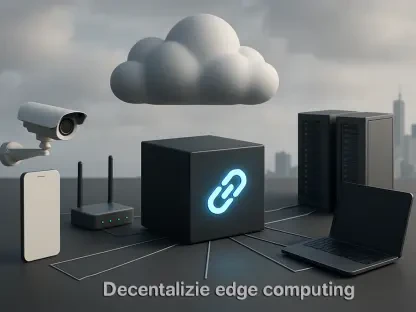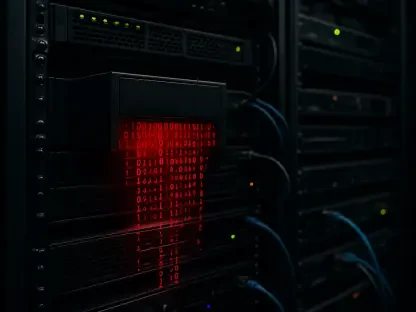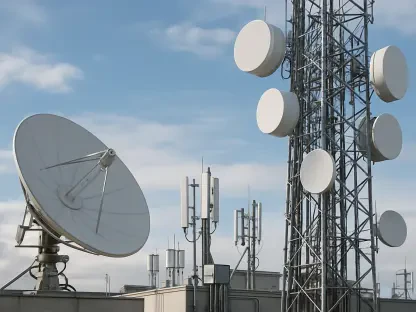What happens when two of tech’s fiercest rivals unite in a deal worth billions, fundamentally altering the landscape of enterprise computing? In a stunning turn of events, Intel and Nvidia have forged a strategic alliance with Nvidia investing $5 billion for a 5% stake in Intel, positioning itself as the second-largest shareholder behind the U.S. government. This partnership, unveiled in 2025, has sent ripples through the industry, promising to reshape data centers, AI innovation, and hardware ecosystems. The implications of this collaboration are vast, sparking curiosity about how it will impact everything from product performance to market dynamics.
The significance of this alliance cannot be overstated in a world increasingly driven by cloud computing and artificial intelligence. With data centers at the heart of modern technology, the demand for integrated CPU-GPU solutions has skyrocketed, creating fierce competition among industry giants. This deal is not merely a financial transaction but a calculated move to address pressing needs for speed and efficiency, challenging rivals like AMD head-on. As businesses and consumers await the fallout, the tech sector braces for a redefined competitive arena where innovation and collaboration may take precedence over traditional rivalries.
A Bold Union of Tech Powerhouses
The Intel-Nvidia partnership marks a historic shift, bringing together two companies once locked in bitter competition. Nvidia’s substantial investment focuses on Intel’s products division, steering clear of operational control or board seats, yet it signals a deep technological synergy. This deal, valued at billions, isn’t just about money—it’s about combining strengths to dominate key markets like enterprise computing and networking.
Analysts note that such a collaboration would have been unimaginable a decade ago due to past tensions. However, the current rapport between Nvidia CEO Jensen Huang and Intel CEO Lip-Bu Tan has paved the way for this unexpected alignment. Their shared vision of integrated hardware solutions hints at a future where competition gives way to strategic teamwork, potentially setting a precedent for other tech giants.
The Stakes in Today’s Tech Ecosystem
In an era where data is king, control over hardware ecosystems dictates market power. The alliance between Intel and Nvidia responds directly to the escalating need for seamless CPU-GPU integration, critical for powering everything from AI algorithms to cloud services. This move positions the duo as a formidable force, especially in data center markets where efficiency translates to billions in revenue.
The broader impact touches businesses and end-users alike. Enhanced performance could lead to faster innovation cycles in AI applications, while integrated solutions might stabilize pricing in a volatile hardware market. With enterprise needs evolving rapidly, this partnership aims to deliver cutting-edge technology that keeps pace with global demands, potentially altering how industries leverage computing power.
Unpacking the Deal’s Structure and Ripple Effects
Delving into the specifics, Nvidia’s $5 billion stake makes it a major player in Intel’s future without seeking direct governance. The focus on Intel’s products division emphasizes technological collaboration over corporate takeover, with plans to integrate Nvidia GPUs into Intel chips for both client and server segments. This strategic alignment allows Intel to step back from competing in large-scale AI markets, abandoning projects like Gaudi accelerators in favor of Nvidia’s expertise.
The competitive landscape feels the strain, particularly for AMD, which previously held an edge with its combined CPU-GPU offerings in supercomputers like Frontier. Now, with a comparable Intel-Nvidia solution on the horizon, AMD faces intensified pressure. Market dynamics shift as Nvidia gains deeper access to the x86 ecosystem, vital for data centers, while Intel secures a competitive boost through GPU integration, reshaping their respective strategies.
Voices from the Field and Historical Perspective
Nvidia CEO Jensen Huang has hailed the integration of Nvidia GPUs into Intel chips as a game-changer for hardware performance. Industry experts echo this sentiment, with Anshel Sag from Moor Insights & Strategy pointing out that regulatory hurdles make a full merger unlikely, positioning this deal as a balanced partnership. Alvin Nguyen from Forrester Research views Nvidia as the dominant force, gaining significant market reach through this collaboration.
Jack Gold of J. Gold Associates highlights the mutual benefits, noting Nvidia’s reliance on Intel’s Xeon chips for large systems enhances performance for both parties. Reflecting on history, such cooperation seemed improbable in earlier decades due to entrenched rivalries. Yet, the personal dynamic between Huang and Tan has turned a once-unthinkable alliance into a reality, showcasing how leadership can bridge past divides.
Strategic Insights for Navigating What’s Next
For industry players, keeping tabs on competitive responses is crucial, especially how AMD counters this challenge—whether through accelerated innovation or new partnerships. Businesses dependent on data center hardware must evaluate upcoming Intel products with Nvidia GPUs, assessing impacts on cost, compatibility, and performance. These shifts could redefine procurement strategies in the near term.
Long-term implications also warrant attention, as Intel’s pivot away from independent AI initiatives suggests a trade-off between collaboration and diversity in tech solutions. Meanwhile, Nvidia’s dual focus on Arm CPU development for niche applications alongside x86 integration with Intel raises questions about future hardware ecosystems. Stakeholders should monitor these dynamics closely, as they could shape the balance of power in computing for years to come.
As this transformative partnership unfolded, it redefined the boundaries of competition and collaboration in the tech sector. Looking back, the Intel-Nvidia alliance stood as a testament to strategic adaptation in a fast-evolving industry. For those navigating this landscape, the next steps involved staying informed about product developments and market shifts, ensuring readiness to adapt to integrated solutions that promised enhanced performance. Beyond immediate impacts, consideration of how such alliances could inspire broader industry cooperation offered a pathway to sustained innovation, marking a pivotal chapter in technology’s ongoing story.









